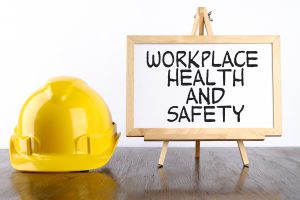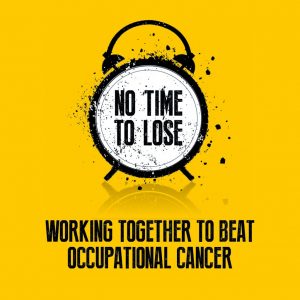
It is a legal requirement for businesses where staff work at fixed workstations, home workers or hot-desking to complete the following:
Improper use of DSE or poorly designed workstations or environments can lead to staff suffering with neck, shoulder, and back pain as well as fatigue and eye strain.
What is a DSE risk assessment?
Most employers are required to carry out a DSE assessment, but what exactly is one, and what does it need to cover? To start, let’s understand what DSE is, then look at how we can assess it.
What is DSE?
DSE stands for Display Screen Equipment. As the name suggests, a DSE assessment is an assessment of Display Screen Equipment. Display Screen Equipment (DSE) is a device or equipment with a display screen and often refers to a computer screen. However, it includes both conventional display screens and those used in emerging technologies such as laptops, touchscreens and other similar devices.
In a work environment, desktop computers are traditionally looked at when considering DSE, but it is important to consider other display screens such as tablets, laptops and smartphones.
What is a DSE assessment?
A DSE assessment is an assessment of risk from the way we use computers, laptops, tablets and other display screens at work. Each workstation should be assessed, and the risks reduced as low as is practical.
A DSE assessment looks at how a user works at their workstation. Like any risk assessments, the aim is to identify the hazards and assess the likelihood and severity of harm to those that may be affected. Then, reduce the risk by altering the workstation or providing tools to make it comfortable.
If you have sat at a computer screen for a long time, you may already be familiar with some of the hazards. Poor posture or lack of movement throughout the day can lead to back pain. Staring at the screen for long lengths of time can give you headaches.
But it’s not just computer screens that are causing issues. Slouching over your phone, tablet or handheld device for even a short length of time can give you neck and upper back pain.
Why do we need a DSE assessment?
The Health and Safety (Display Screen Equipment) Regulations. These regulations lay out some key requirements for employers surrounding the use of DSE, one of which is the need to carry out a suitable and sufficient assessment of workstations used in the workplace.
2.—(1) Every employer shall perform a suitable and sufficient analysis of those workstations which – (regardless of who has provided them) are used for the purposes of his undertaking by users; or have been provided by him and are used for the purposes of his undertaking by operators The Health and Safety (Display Screen Equipment) Regulations 1992
Any workstation used by your business, regardless of who provides it, should be assessed. So DSE requirements apply to co-working spaces, remote working, temporary workplaces and your own offices.
However, this should not just be considered a tick box exercise to comply with legal requirements. A DSE assessment can actually help combat ill-health and conditions, such as epilepsy and therefore improve health and productivity in the workforce.
DSE assessments can also help increase productivity. This is the result of employees being less tired, and more comfortable while sitting/standing at their workstation.
What does a DSE risk assessment cover?
Problems are often caused by the way we use our DSE. The display screen may not be the cause of back pain, but the way you sit at it could. Computer workstations or equipment can be associated with neck, shoulder, back or arm pain, as well as with fatigue and eyestrain.
So, it’s not just the display screen that needs to be assessed. Everything to do with the use of the equipment should be considered. Other items looked at in the assessment includes, the keyboard, the mouse, furniture and the environment.
The assessment should also encompass the general environment and includes lighting, reflections, glare, temperature, humidity and noise. All of these elements can impact how the equipment is used, and the risks to users.
The business benefits to DSE assessments
Display screen equipment are the most common tool used across all businesses, and can offer many benefits to a business including:
Improved health, wellbeing and morale for DSE users
Sustained production from reduced sick leave
Minimising the risk of compensation claims for upper limb disorders
Reduced administration costs
Encourages positive behaviour and adoption of DSE good practice.
Improved organisation safety
Contact us should you require a DSE Assessment.
The Walker Health and Safety blog is brought to you by the team at Walker Health and Safety Services Limited. You can contact us using the address or email address below or via the form on our main site.
e-Innovation Centre
University of Wolverhampton
Telford Campus
Priorslee
Telford
Shropshire
West Midlands
TF2 9FT
E-mail: info@walkersafety.co.uk
Telephone: 0845 834 0400
Fax: 0845 834 0401
Guest Blogging
If you feel that you could contribute to this blog then please feel free to send me a proposal of your guest blogging ideas and we can discuss these further info@walkersafety.co.uk . Please note any proposals must be of benefit to my readers from individuals with knowledge of their subject matter.
 The top management of any organisation should take ultimate responsibility for occupational health and safety (OHS). As part of this, there should be a process in place that enable management to review health and safety performance.
The top management of any organisation should take ultimate responsibility for occupational health and safety (OHS). As part of this, there should be a process in place that enable management to review health and safety performance.
Reviewing health and safety performance closes the loop in the process and will inform the organisation whether it is effectively controlling risks and if the management system remains fit for purpose.
Focusing on the key words, the various standards available note the review should check that the system is:
The Health and Safety Executive (HSE) takes a slightly more simplified approach and suggests that the purpose of the review is to establish whether the principles of strong and active leadership, worker involvement, and assessment and review have been embedded in the organisation.
Whatever the purpose, a management review, like other functions, will require thought and planning to achieve the necessary outcomes of the review process.
As the phrase suggests, management reviews must be led by top management and as such, the executive holding responsibility for health and safety should have the authority and remit to undertake the management review.
Key to the success of the management review process is ensuring the right inputs in terms of information and data. According to ISO 45001, this will be based around the elements of the management system and will include:
In addition, the HSE publication INDG417 suggests that a management review should examine whether:
Similarly, BS 18004 makes recommendations as to inputs into the management review process including any organisation-specific leading and lagging performance indicators. It also suggests the following be considered.
There will be outcomes from any management review process. Both ISO 45001 and BS 45002 state that the management review should draw a conclusion as to the continuing suitability and effectiveness of the occupational health and safety management system.
Outcomes should include decisions related to:
Changes required will clearly be organisation-specific and can address any element of the management system including changes to the H&S policy, revised objectives, increased need for competency, etc.
One of the key purposes of a cyclical management system is to take opportunities for continual improvement. This can be influenced not just by identified shortfalls in performance against benchmarked best practice, but also by identifying where new technologies, for example, can reduce risks that do not exceed excessive costs. Other improvements could relate to ensuring the system is fully aligned as an integral part of the business.
Any change or improvement may have resource implications and the management review should identify what these resource implications are. The process for managing change will depend on the types of outcomes from the review process.
The outcomes of the management review should be communicated and where necessary consulted on with relevant stakeholders both internal and external to the organisation.
However, it may be the case that the outcomes and recommendations may require top management review and approval prior to being released into the public domain and implemented. This will very much depend on the sensitivity of the outcomes and the organisation culture.
Adequate records also need to be kept that ensure the findings of the review process are available to relevant parties such as enforcing authorities, staff representatives, those undertaking future management reviews, insurers, etc.
BS 18004 recommends that the outputs should be “incorporated within performance reports for communication to their various stakeholders”. This could include annual reports to investors, corporate governance and social responsibility statements.
Finally, where the management review indicates areas of good performance or even performance beyond the objectives set, top management may wish to celebrate this and recognise/reward those responsible for good performance levels.
Contact Walker Health and Safety Services for further advice.
 The Health and Safety at Work Act, etc 1974 states that employers should provide “such information, instruction, training and supervision as is necessary to ensure, so far as is reasonably practicable, the health and safety at work of his employees”. The Management of Health and Safety at Work Regulations 1999 further require that employers provide employees with adequate health and safety training both on recruitment and when the risks to which they are exposed change, for example, where they move to a new role or when new work equipment is provided.
The Health and Safety at Work Act, etc 1974 states that employers should provide “such information, instruction, training and supervision as is necessary to ensure, so far as is reasonably practicable, the health and safety at work of his employees”. The Management of Health and Safety at Work Regulations 1999 further require that employers provide employees with adequate health and safety training both on recruitment and when the risks to which they are exposed change, for example, where they move to a new role or when new work equipment is provided.
The Management of Health and Safety at Work Regulations 1999 go on to state that training should be repeated periodically where appropriate, be adapted to take account of any new or different risks and take place during working hours. Other sets of regulations which require training of employees include the Health and Safety (Display Screen Equipment) Regulations 1992, the Health and Safety (First-Aid) Regulations 1981, the Provision and Use of Work Equipment Regulations 1998 and the Regulatory Reform (Fire Safety) Order 2005.
Organisations that have their health and safety management systems certified, for example to BS OHSAS 18001 or ISO 45001, are also required to conform to requirements concerning competence.
Unfortunately, when it comes to work-related training, there is no one-size-fits-all. Employers should consider who in their organisation needs training, what training should be provided, when, by whom, and when training should be repeated and refreshed. Consideration should also be paid to whether staff require formal qualifications for their role, such as facility managers, first aiders, or the maintenance teams responsible for legionella safety.
Ensure Employees follow Your Training: 5 Top Tips. Click here
Training – Contact Us for your training requirements or to discuss training solutions. Click here to look at our website training page.
 Hosted by the Mental Health Foundation, Mental Health Awareness Week 2019 will take place from Monday 13th to Sunday 19th May 2019. The theme for 2019 is Body Image – how we think and feel about our bodies. In 2018, Mental Health Awareness Week was focused on stress.
Hosted by the Mental Health Foundation, Mental Health Awareness Week 2019 will take place from Monday 13th to Sunday 19th May 2019. The theme for 2019 is Body Image – how we think and feel about our bodies. In 2018, Mental Health Awareness Week was focused on stress.
This years theme has a relevant to anyone who reads our blogs. The way we view our bodies can effect our mental health.
The Mental Health Foundation are providing a host of resources to help celebrate the week from posters to booklets, please follow here.
Mental health problems can affect anyone, any day of the year, but this week is a great time to have a chat with a friend,family member or colleague and have think about your own wellbeing too. You could even join one of our campaigns to help make sure no one experiences a mental health problem alone.
Resource Body Image
Contact us if you require further information.
 The British Association of Dermatologists (BAD) currently runs a national campaign around skin cancer called Sun Awareness, which includes national Sun Awareness Week in May. This campaign is overseen by the BAD’s Skin Cancer Prevention Committee, comprised of leading medical professionals with expertise in skin cancer, vitamin D and public health messaging.
The British Association of Dermatologists (BAD) currently runs a national campaign around skin cancer called Sun Awareness, which includes national Sun Awareness Week in May. This campaign is overseen by the BAD’s Skin Cancer Prevention Committee, comprised of leading medical professionals with expertise in skin cancer, vitamin D and public health messaging.
Sun Awareness Week (6-12 May) encourages people to regularly self-examine for signs of skin cancer and teaches them about the dangers of sunburn and excessive tanning.
Worldwide, non-melanoma skin cancer is the most frequently diagnosed cancer, with an estimated 2-3 million cases registered every year.
Ultraviolet radiation (UVR) is a risk that particularly affects outdoor workers, who receive 5-10 times the yearly sun exposure of indoor workers.
Walker Health and Safety Services Limited is supporting Sun Awareness Week and the Institution of Occupational Safety and Health’s (IOSH) global campaign to tackle occupational cancer – ‘No Time to Lose’, which aims to get carcinogenic exposure issues more widely understood and help businesses take action by providing free practical resources.
Find out more about the campaign at www.notimetolose.org.uk/sun-awareness, follow @_NTTL on Twitter, and use the hashtag #SunAwarenessWeek.
Resources for your company can be downloaded here. https://www.notimetolose.org.uk/free-resources/resource-library/pack-2-solar/
Also, contact us for further information.